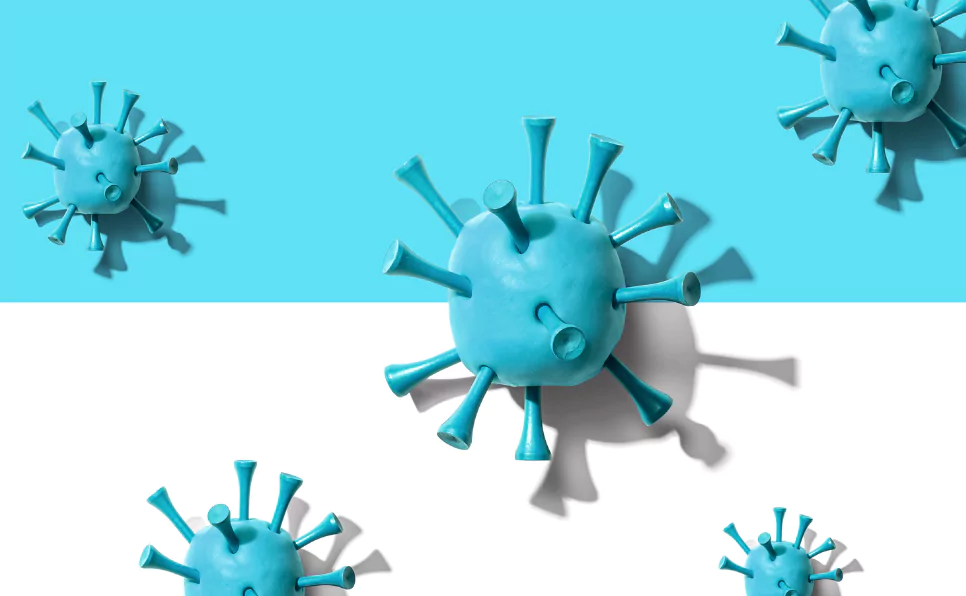Throughout history, humanity has faced numerous epidemics, each leaving its mark not just in the annals of history but within the very fabric of our genetic makeup.
From the bubonic plague to the Spanish flu, these widespread diseases have shaped the course of human evolution in ways we’re only beginning to understand.
This article aims to shed light on the genetic legacy of ancient epidemics and their impact on modern humans.
We will exploring how our ancestors’ experiences with these diseases have influenced our genetic resilience or vulnerability.
Major Ancient Epidemics Through History
Prehistoric Epidemics and Human Evolution
Evidence suggests that even in prehistoric times, epidemics played a pivotal role in shaping human populations.
Ancient bones and teeth provide clues to the pathogens our ancestors faced, revealing infections that caused widespread mortality.
For example, analysis of Neanderthal DNA has suggested that they encountered several pathogens, some of which we still deal with today.
These early brushes with disease likely drove genetic mutations, with survivors passing on traits that offered some level of resistance to future generations.
The Plague and its Genetic Footprints
Perhaps no disease is as infamous as the Black Death, the plague that decimated Europe in the 14th century.
Recent genetic studies have indicated that people who survived the plague passed on genes that provided a survival advantage, suggesting that the Black Death played a significant role in shaping the genetic pool of modern Europeans.
Such findings shows the impact of epidemics on human genetics, revealing how survival from past diseases can influence the genetic makeup of entire populations.
Smallpox and the New World
The introduction of smallpox to the indigenous populations of the Americas by European explorers is a stark example of an epidemic’s destructive power.
With no prior exposure and thus no immunity, indigenous peoples suffered catastrophic losses.
Yet, among this devastation, survivors emerged, some of whom carried genetic variations that may have conferred a degree of resistance to the disease.
The 1918 Influenza Pandemic
The 1918 influenza pandemic, often referred to as the Spanish flu, infected a third of the world’s population and caused the deaths of tens of millions.
Researchers have speculated that those who survived the 1918 flu might have passed on genetic factors that could influence their descendants’ response to flu viruses, a hypothesis that remains an area of active research.
Understanding these genetic implications helps us appreciate the ongoing interaction between our genetic makeup and the pathogens we encounter.
The Science of Survival
Understanding Genetic Resistance
When we talk about genetic resistance, we’re getting into how our bodies have learned to fight off diseases over thousands of years.
It’s like our ancestors passed down their best disease-fighting tricks through our DNA.
Now, not everyone’s immune system is the same. Some have specific genetic mutations that make them super resistant to certain diseases.
For example, take the CCR5-delta32 mutation. This little change in our DNA makes some people almost immune to HIV.
Another example is how some people of African descent carry a mutation that helps them resist malaria, thanks to changes in the shape of their red blood cells.
Evolutionary Pressure from Epidemics
Epidemics have been like nature’s harsh training sessions.
They’ve shaped human genetics by applying what scientists call evolutionary pressure.
It means only those who could survive the diseases got to pass their genes on. Natural selection, a concept Charles Darwin talked about, plays a big role here.
Over time, this process has sculpted the human genome, making future generations more resistant to the diseases their ancestors faced.
Modern Humans: Living Legacies of Ancient Epidemics
Detecting Ancient Viral DNA in Modern Genomes
Now, this is where it gets really interesting.
Scientists can actually find traces of ancient viruses in our DNA today.
They use techniques like genome sequencing to spot viral DNA that has been embedded in human genomes for thousands of years. It’s like finding fossils, but at the molecular level.
There have been some groundbreaking discoveries.
For instance, researchers have found evidence of ancient retroviruses, relatives of modern HIV, in human DNA. This shows that our ancestors battled viruses similar to those we face today.
The Impact on Health and Disease Today
The battles our ancestors fought aren’t just history. They influence our health today.
Some of the genetic changes that helped our forebears survive ancient epidemics might affect how we respond to diseases now.
For example, the same genetic traits that made people resistant to the plague in the Middle Ages might influence how some individuals respond to diseases like HIV.
Certain diseases today, like sickle cell anemia, are directly related to genetic changes that once provided a survival advantage against malaria.
It’s a double-edged sword: a mutation that can save you from one disease might make you more susceptible to another.
Final Thoughts
The diseases that ravaged our ancestors have left their mark on our DNA, shaping the evolution of human health and disease resistance. This legacy highlights the importance of genetic research in understanding our past and improving our future health outcomes.
By learning the lessons of the past, we can forge a future where medicine is more personalized, effective, and attuned to the genetic profiles that make each of us unique.
FAQs
Can everyone find traces of ancient epidemics in their DNA?
Yep, most of us have some traces of ancient epidemics in our DNA. It’s like carrying a history book inside us that tells stories of the diseases our ancestors faced. But, the type and amount of these traces can vary a lot from person to person.
How does studying ancient epidemics help us fight modern diseases?
Studying ancient epidemics helps us understand how diseases have evolved and how our bodies have adapted. This knowledge is gold for developing new vaccines and treatments, giving us an edge in the ongoing battle against diseases.
Are some populations more genetically resistant to diseases because of their ancestors’ exposure to certain epidemics?
Absolutely. Some populations have built up genetic defenses against diseases because their ancestors survived epidemics. This built-in resistance can make them less likely to catch certain diseases today. It’s like having an ancestral shield against illnesses.
For Further Reading
- Evolution of immune genes is associated with the Black Death | Nature
- Ancient DNA shows people with certain genes were more likely to survive the Black Death – UChicago
- European epidemics left a genetic legacy in Native Americans | UChicago Medicine

Dr. Renu Bala is a pioneering genetic researcher focused on neonatal and maternal health. Currently, a Post Doctoral Research Associate at the University of Exeter, UK, working on Diabetes and Depression. Her previous innovative studies have revealed key insights into the socio-demographic and nutritional factors influencing Preterm birth. Her work in substantial genetic awareness projects in India, along with her published research, underscores her significant contributions to the field.





